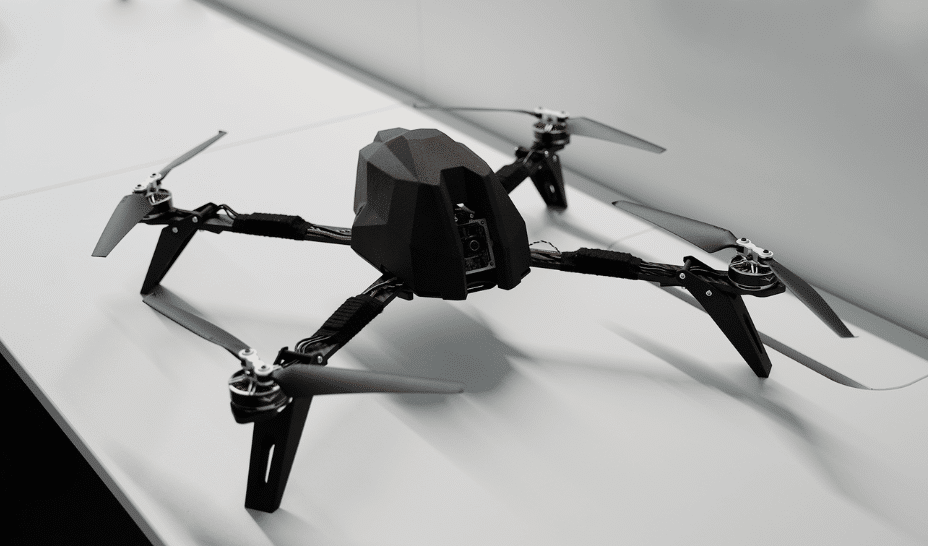It’s no secret that technology advances in every sector and in every direction, transforming industries and redefining capabilities. In the realm of defence, these advancements are crucial, as nations seek to enhance their capabilities, ensure national security, and stay ahead of potential threats. Autonomous drones, robotics, and AI-driven systems are at the forefront of this technological revolution.
Europe, in particular, has seen a surge in defence startups. In previous articles, we discussed promising defence startups setting new standards that contribute to a (hopefully) safer, more secure world. Among these startups is Orbotix Technologies, a Brasov-based company founded in 2023 that has quickly made a name for itself in the defence industry.
Orbotix Technologies specialises in autonomous drones and robotics, designing advanced equipment for government and defence sectors. Their flagship product, the OROS AI solution, enhances soldier protection through comprehensive threat detection and autonomous target acquisition. By ensuring precision and rapid responses to armoured vehicle threats, Orbotix is dedicated to improving the safety and efficiency of soldiers on the battlefield.
Diverse backgrounds founded Orbotix Technologies: Bogdan Ochiana, who comes from IT and consulting, and I, with a military background and extensive experience in the defence industry. My interactions with various special forces units gave me insights into the gap between current technology and its application on practical battlefield needs. We were inspired to create technology that not only enhances the capabilities of our soldiers but also prioritizes their safety and efficiency on the field.
What were some of the initial challenges Orbotix Technologies faced when starting in this industry, and how did you overcome them?
One of our primary challenges was adaptability, given the constantly evolving nature of the battlefield. Recent conflicts have introduced new paradigms and asymmetric warfare, requiring rapid innovation and adaptation. We focused on developing technology that thrives in denied environments, ensuring mission success despite the unpredictable nature of modern warfare.
Can you elaborate on the current technological solutions used on the battlefield and why you believe they are not even comparable to modern smartphones?
Many current battlefield technologies lag behind modern smartphones in terms of processing power, user interface, and integration capabilities. Smartphones benefit from rapid consumer-driven innovation cycles, which are not always mirrored in defence technology. Our goal is to bridge this gap, leveraging advanced technology to enhance operational effectiveness.
In what ways do you see your autonomous drones and robotics solutions addressing the gaps in current battlefield technology?
Our autonomous drones and robotics are designed to minimize soldiers’ exposure to danger while increasing mission success rates. By utilizing advanced AI and robotics, we aim to provide real-time situational awareness and operational control from a distance where the soldiers are not exposed to a direct threat, significantly improving protection and efficiency on the battlefield.

Can you provide some specific examples of how your technology is being used in the field today and the impact it has made?
Currently, our prototypes are in the testing phase. We are working diligently to refine our software, AI, and drone technology to create a comprehensive final product. Although not yet deployed in active combat, we anticipate our solutions will soon make a significant difference on the battlefield.
What are some of the key innovations Orbotix Technologies has developed that you believe will revolutionise battlefield technology?
While I cannot delve into specifics, our key innovations include integrating proprietary hardware, custom PCBs, AI models, and specialized software. These advancements are designed to reduce our soldier exposure and enable a secure, single-soldier control platform, revolutionizing operational dynamics.
How do you see the role of AI evolving in your industry, and what are the potential benefits and risks associated with increased AI integration in defence technology?
AI has rapidly transformed various sectors, including defence. The key benefits include enhanced decision-making, efficiency, and operational capability. However, it is crucial to maintain human oversight to ensure ethical and controlled use. Autonomous AI must be managed carefully to prevent unintended consequences, ensuring it serves to augment human capabilities positively.
With the significant investment in defence technology, how does Orbotix Technologies balance its developments with ethical considerations, particularly concerning the potential for escalation in conflict?
The unexpected proximity of recent conflicts to our borders has underscored the need for enhanced defence systems, particularly air defence. We are committed to developing technology that protects lives and prevents escalation, focusing on ethical applications that are human-centric, while our drones and software operate autonomously, the final decision will always be made by a person, that prioritises safety and defence for everyone involved in the conflict.
Do you believe that the focus on advancing battlefield technology could detract from investment in other critical areas like education or sustainability? Why or why not?
Creating a robust defence system is essential to safeguarding other critical sectors like education and sustainability. Without adequate defence, these areas are vulnerable to disruption. Europe, in particular, must build its defence infrastructure to maintain overall stability and progress.
What is your vision for the future of Orbotix Technologies, and how do you plan to expand or diversify your offerings in the coming years?
Our vision includes enhancing our product lineup, particularly in software and production facilities. We aim to develop a range of drones, software, and robotic solutions that advance defence capabilities. At the moment we have three developments in the works, our nano drone OROS-X for close-quarter battles, our surveillance drone WATCHER-1 for detection and identification of threats and our one-way attack drone WASPER-1, our prototype that will be ready for testing in June-July this year. Our ultimate goal is to evolve towards creating the future Soldier 2.0, enhancing human performance and protection.
- SEO Powered Content & PR Distribution. Get Amplified Today.
- PlatoData.Network Vertical Generative Ai. Empower Yourself. Access Here.
- PlatoAiStream. Web3 Intelligence. Knowledge Amplified. Access Here.
- PlatoESG. Carbon, CleanTech, Energy, Environment, Solar, Waste Management. Access Here.
- PlatoHealth. Biotech and Clinical Trials Intelligence. Access Here.
- Source: https://www.eu-startups.com/2024/05/enhancing-soldier-safety-interview-with-orbotix-technologies-ceo-gregory-letare/



